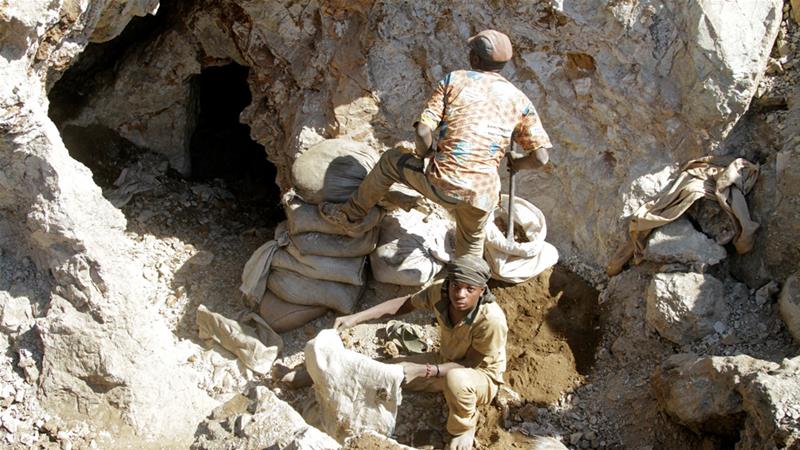Two galleries collapsed in an open-pit mine owned by Swiss mining giant Glencore, killing artisanal miners.

The number of artisanal miners killed by a landslide at a copper and cobalt mine owned by Swiss-based mining giant Glencore in southern Democratic Republic of the Congo (DRC) has risen to 43 and could climb further as the search for missing workers continues, local officials have said.
The accident occurred on Thursday in the Kolwezi area of Lualaba province when two galleries caved in at the KOV open-pit mine operated by the Kamoto Copper Company (KCC), a subsidiary of Glencore.
The original death toll was estimated at 36 but rose through Thursday evening and into Friday as more bodies were uncovered, the officials told Reuters news agency.
“We think that other bodies are still under the rubble,” said Joseph Yav Katshung, the director of cabinet for the governor of Lualaba, Richard Muyej.
Muyej said the landslide was caused by “clandestine artisanal diggers who have infiltrated [the mine]”.
“The old terraces gave way, causing significant amounts of material to fall,” he told Reuters. “KOV is a delicate site and presents many risks.”
Glencore said in a statement that it had confirmed 19 deaths “with possible further unconfirmed fatalities” and was assisting search-and-rescue operations by local authorities.
“The illegal artisanal miners were working two galleries in benches overlooking the extraction area. Two of these galleries caved in,” the company said.
Artisanal mining by independent workers using their own materials on the edge of commercial mine sites is a big problem across Africa.
Rudimentary, outdated practices
The statement said KCC had observed a “growing presence” of illegal miners, with an average of 2,000 people daily sneaking onto its operating sites.
The rudimentary and often outdated practices employed by independent miners can compromise the safety of the mines, and accidents among them are common.
“KCC urges all illegal miners to cease from putting their lives at risk by trespassing on a major industrial site,” Glencore said.
Delphin Monga, provincial secretary of the UCDT union which represents KCC employees, said a crack in that part of the pit had been noticed on Wednesday. He said KCC had put up red warning signs, but the diggers had ignored them.
Illegal mining is common and frequently deadly in the DRC, where safety is often poor and risk-taking high.
The KOV mine, which spans a vast flat expanse on the outskirts of the city of Kolwezi near the Zambian border, is one of the largest high-grade copper assets in the world.
The collapse of a 250-metre wall inside the same pit killed seven mine employees in 2016.
Disasters
Thousands of illegal miners operate in and around mines in southern Congo, which produce more than half of the world’s cobalt, a key component in electric car batteries.
Mine disasters in Africa have cost the lives of numerous miners, especially unauthorised artisanal miners who operate without safety standards or regulations.
At least nine illegal gold miners died in Zimbabwe when they were trapped in a mine last month.
Twenty-two died in a previous Zimbabwean gold-mine flood in February, and 14 tin miners were buried alive in Rwanda after heavy rains in January.
In February, about 20 people died when a truck carrying acid to Glencore’s Mutanda Mine in DRC collided with two other vehicles.
The DRC’s military deployed hundreds of soldiers last week to protect a copper and cobalt mine owned by China Molybdenum Co Ltd from illegal miners.
BMO Capital Markets analyst Edward Sterck said if the incident is related to illegal mining, any effect may be relatively short-term beyond an investigative period.
“However, preventive action will likely be needed and it could impact Glencore’s social licence to operate,” he added.
The company said the incident had not affected output, but shares in Glencore closed down 4.9 percent, their worst day of trading since December.





